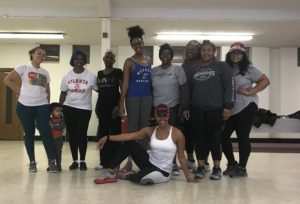 BY AUTUMN CHMIELEWSKI, MHA, MA
BY AUTUMN CHMIELEWSKI, MHA, MA
The month of February often brings to mind oversized chocolate boxes and construction paper cards. But Valentine’s hearts aren’t the only ones taking center stage this month. February is also American Heart Month. The designation was first made by President Lyndon B. Johnson in the 1960’s as a way to help increase awareness of heart disease and every President since then has continued the tradition through an annual federal proclamation.
Heart disease and conditions leading to it can happen at any age, according to the Centers for Disease Control and Prevention. And half of all American adults have at least one of the top three risk factors associated with heart disease: high blood pressure, high cholesterol, and smoking.
The problem is even larger for many racial and ethnic minority groups in Minnesota who suffer from some of the worst health disparities in the nation.
A 2015 article published in the Current Cardiology Reviews Journal reported that “African American adults have among the highest rates of hypertension in the world.” The report also found that “African Americans are at a significantly higher risk of suffering from heart failure compared to other ethnic groups.” Here in Minnesota, the stroke death rate is 26% higher in African Americans compared to whites, and the heart disease death rate for middle-aged African American adults, ages 35 to 64, is twice as high compared to whites.
Racial disparities in heart disease and stroke are deeply rooted in many factors including racism, discrimination, culture, and social determinants of health such as income, education, housing, and transportation.
A commonly cited statistic says that up to 80% of an individual’s health is determined by social determinants of health, the things that happen outside of a clinic or hospital. Given this fact, a traditional approach to health care isn’t likely to solve the disparity in heart health.
That’s exactly the idea behind what’s happening in the health and wellness ministry at one local church in South Minneapolis.
St. Peter’s AME has been the spiritual and social home to generations of African Americans in Minneapolis since 1880. The red brick building with a gated courtyard and wooden double doors on the corner of 41st Street and 4th Avenue South is home to a newly revived health and wellness ministry led by LaToya Turk, a licensed practical nurse who grew up in Minneapolis.
Turk believes the church provides a safe place for members to work in a group and support each other in more than just fellowship.
“Traditionally in the black churches, the church was where you’d go to get your political information, political meetings, to know what was going on in your community, it was a safe place. And it was a place of empowerment,” she said. “It’s like a home away from home.”
This feeling of home and caring for one another drives the work of the health and wellness ministry at St. Peter’s. Free health events and screenings such as Zumba classes, blood pressure checks, immunizations, and a community health fair are being offered for church members and the larger community.
Conversations about health and wellness are being normalized and fully integrated into the life of the church to reach the community in a trusted setting. Efforts like this are critical in working to reduce health disparities in minority populations.
Turk has seen the impact of the health disparities in the congregation at St. Peter’s and said it’s alarming.
“We as African Americans, we don’t live as long as other races do and a lot of our health concerns are around our hearts,” she said.
She thinks that offering health information and services in the non-traditional setting of the church will help eliminate some of the barriers to care such as stigma and lack of basic knowledge.
I think education, and providing resources is a huge way to combat those disparities,” Turk said. “I’m a firm believer that if you know better, you do better. And when you don’t know that you have the resources available to you, you don’t always seek them.”
Additional risk factors for heart disease can be eliminated with diet, exercise, and taking steps to quit smoking. Simple tips and activities, like the ones Turk is leading at St. Peter’s, can help with these changes and lead to better heart health.
“If we start healthier trends, we can change the narrative,” Turk said. And she wants the community to know that the health and wellness ministry’s events at St. Peter’s are open to everyone looking to connect and improve their health.
“We want to use the church as a community resource,” she said. “We just want people to know that we can do this together. We can do it together and it’s not just going to be about St. Peter’s as well, it’s really going to be a community, open-invite to come and utilize the services that we want to offer you.”
* * * * * * * * * *
If you or anyone around you is showing signs or symptoms of a heart attack or stroke, immediately call 911. Prompt activation of emergency medical services is the most important step you can take to receive the most appropriate and timely medical care for heart attack and stroke.
Signs of a heart attack include chest pain or discomfort, shortness of breath, pain or discomfort in the arms or shoulder, feeling weak, light headed, or faint, and pain or discomfort in the jaw, neck, or back.
Signs of a stroke include sudden numbness or weakness of face, arm, or leg, especially on one side, sudden confusion or trouble speaking, sudden trouble walking, dizziness, or loss of balance, sudden trouble seeing in one or both eyes, and sudden severe headache with no known cause.
PHOTO CAPTION: St. Peter’s AME Zumba class with Noir Elite Fitness. Photo by LaToya Turk






















